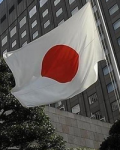-
A bridge too far? - ASEAN could stumble on RCEP’s stairway
January 21, 2014
IMPLEMENTATION of AFTA has not been easy for ASEAN. And monitoring will be essential if the step forward from AFTA, the AEC (ASEAN Economic Community) is to be successful. RCEP (a Regional Comprehensive Economic Partnership) covers an even more diverse community of interests, and may prove to be one step too far . . .





